Judges Guild Supplements by mllaneza
Village Book 1
Original SA post
Let’s pull out some stuff from the back of the closet. It’s dusty, these guys started making D&D supplements in 1976, finally incorporating in 1978 as...
Judges Guild
These guys put out a metric ton of supplements for everything from D&D and Traveller to Tunnels & Trolls and Empire of the Petal Throne. They had a lot of products, they were cheap and they had a lot of tables. Their cover art was almost universally awful. But they were prolific and they did put out some useful supplements; I still have some blank hex maps in a book of them they put out. By 1980 their stuff didn’t look good next to the competition, but at least it was cheap. This would carry them to 1985 and not much further except for a few reprints. And by cheap, I mean cheap. Even in 1980 $2.75 for Village Book 1 wasn’t at all expensive.
And maps. The City State of the Invincible Overlord had a huge city map in it. On top of that, it was set in a vast wilderness setting mapped out in some detail. They catered to map junkies and got a fair amount of money from me over the years. If you look at it now, CSIO is just a map, a key of buildings and some backstory. Back in the late 70s it was the ur-supplement. Almost nobody had it, and when you visited someone who did you made sure you got a look at it. I’m saving the CSIO for later. It’s one of their iconic products, one of the iconic settings from the late 70s and was reprinted by Mayfair in their line of D&D supplements. Since its value is pure nostalgia, it's purestrain grog.
Tables. Just about every supplement was packed with tables. For town names, government type, the always-useful random garrison, or what’s in those vials on the dark altar. Some had rules, some books just had tables. They managed to shoehorn rules for social standing and what might be the first set of social interaction rules ever published.
Now let’s look at something with both maps and tables !
Village Book 1
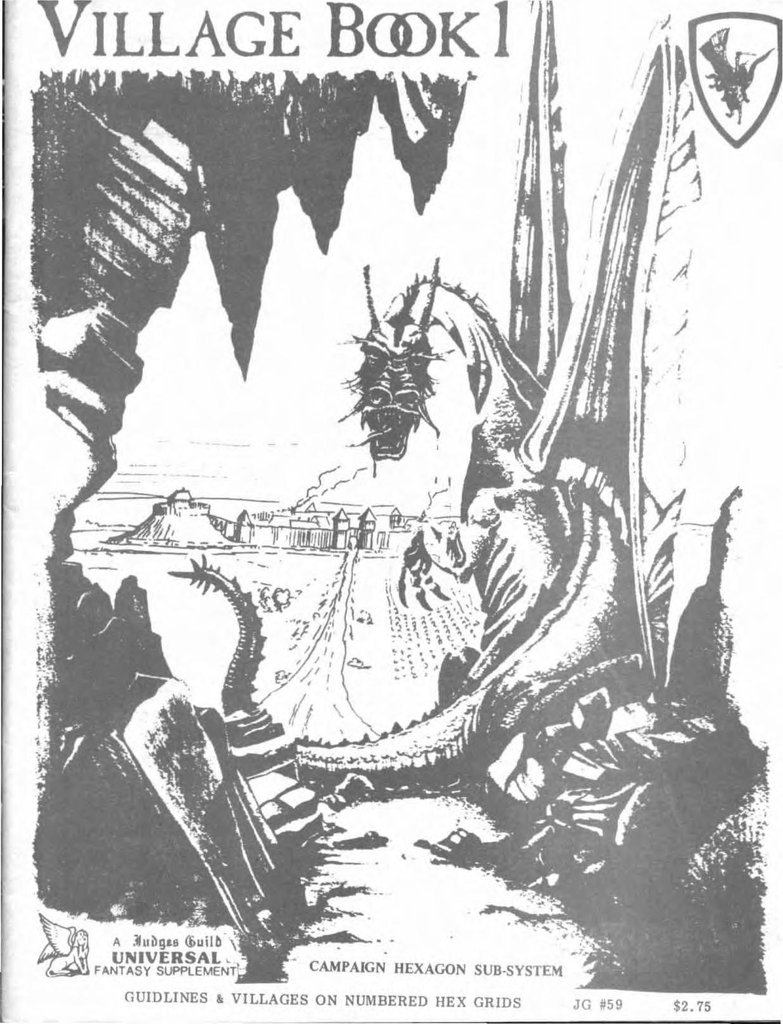
The book is 64 pages, counting the covers. It starts with a blank form to keep track of which of the village maps is located where, what the place is named and so on. On page 4 we hit charts. Charts about the town walls, the number of streets, population, shops present. These are broken out by government type for no apparent reason, which is also rolled randomly. Economic level would probably be a better categorization, but ok, oligarchies and republics have different shops. Fine.
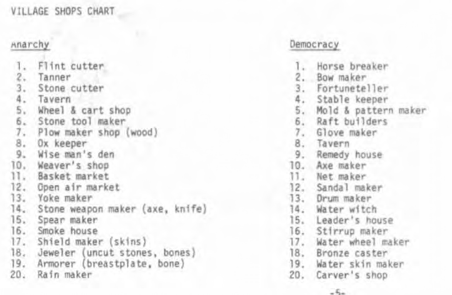
More than three pages of the nine pages of charts are invested in naming the place. Rolling up a random building gets half a page. From the charts we move on to the maps. No, the rules for using the charts are NOT at the back. There aren’t any. They just thought the GM might find a use for them. They probably wont, this isn’t a terribly useful set of tables. The only prose is the introduction, and that’s common to all of the $LOCATION Books.
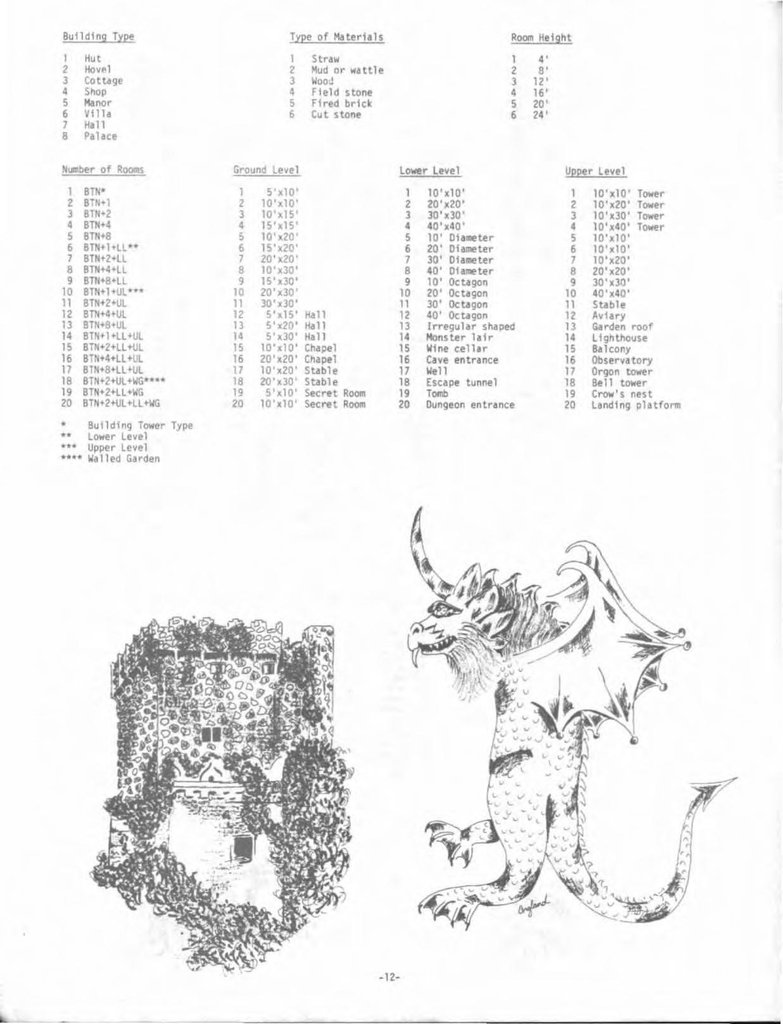
Ah, but the maps. 48 of them. Each featuring a town and terrain features on a hex map of no particular scale. This is where you get your $2.75 worth. The maps aren’t labelled, but I’d consider that a feature. After I cover an adventure or two and get into their kind of content, so will you.
Here’s a nice little hamlet tucked away in the trees...
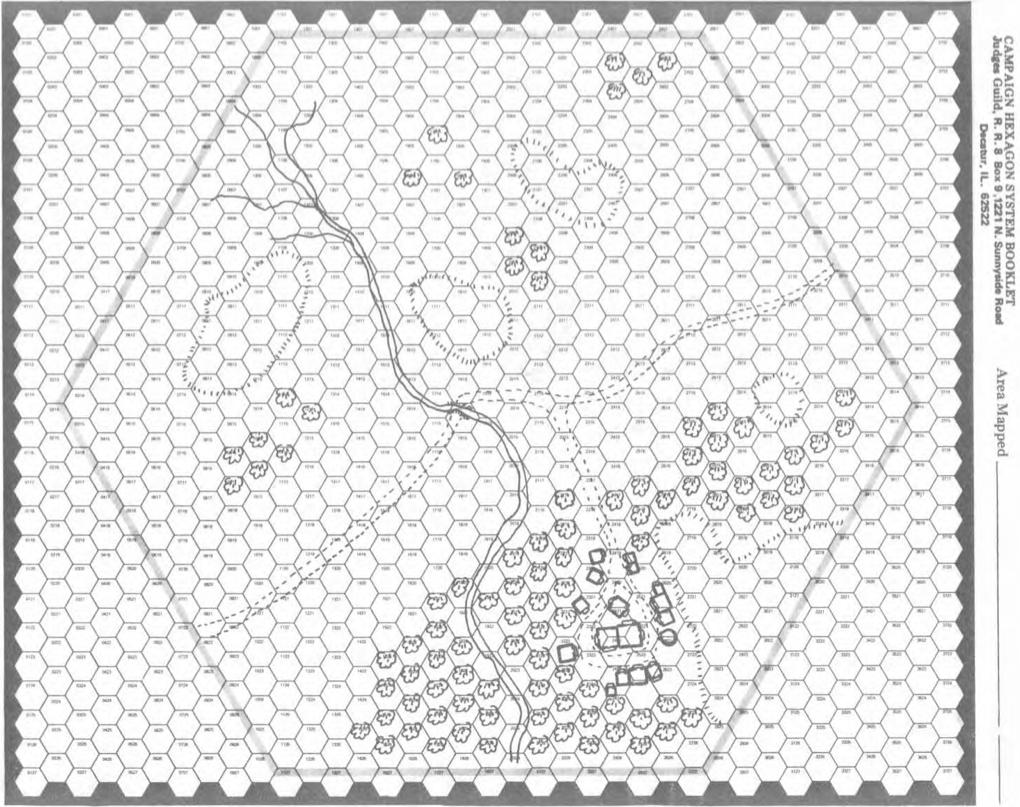
A good sized town, more than just a wide spot in the road, but still only one tavern. There’s a structure in the woods that might prove more interesting...
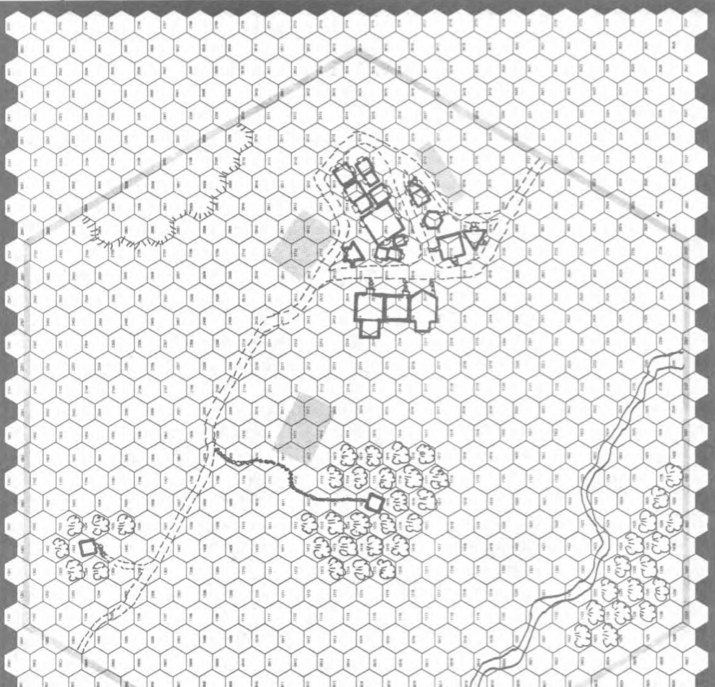
They did another village book, two on castles, one on islands and one on temples. Temple Book 1 was bloody awful, the maps suck and nobody would use them. I’ll show some of those. The islands book has a good set of tables, you can actually roll an island up. Or use the maps. Or use the tables to flesh out the maps. You know what tables are good for.
Temple Book 1
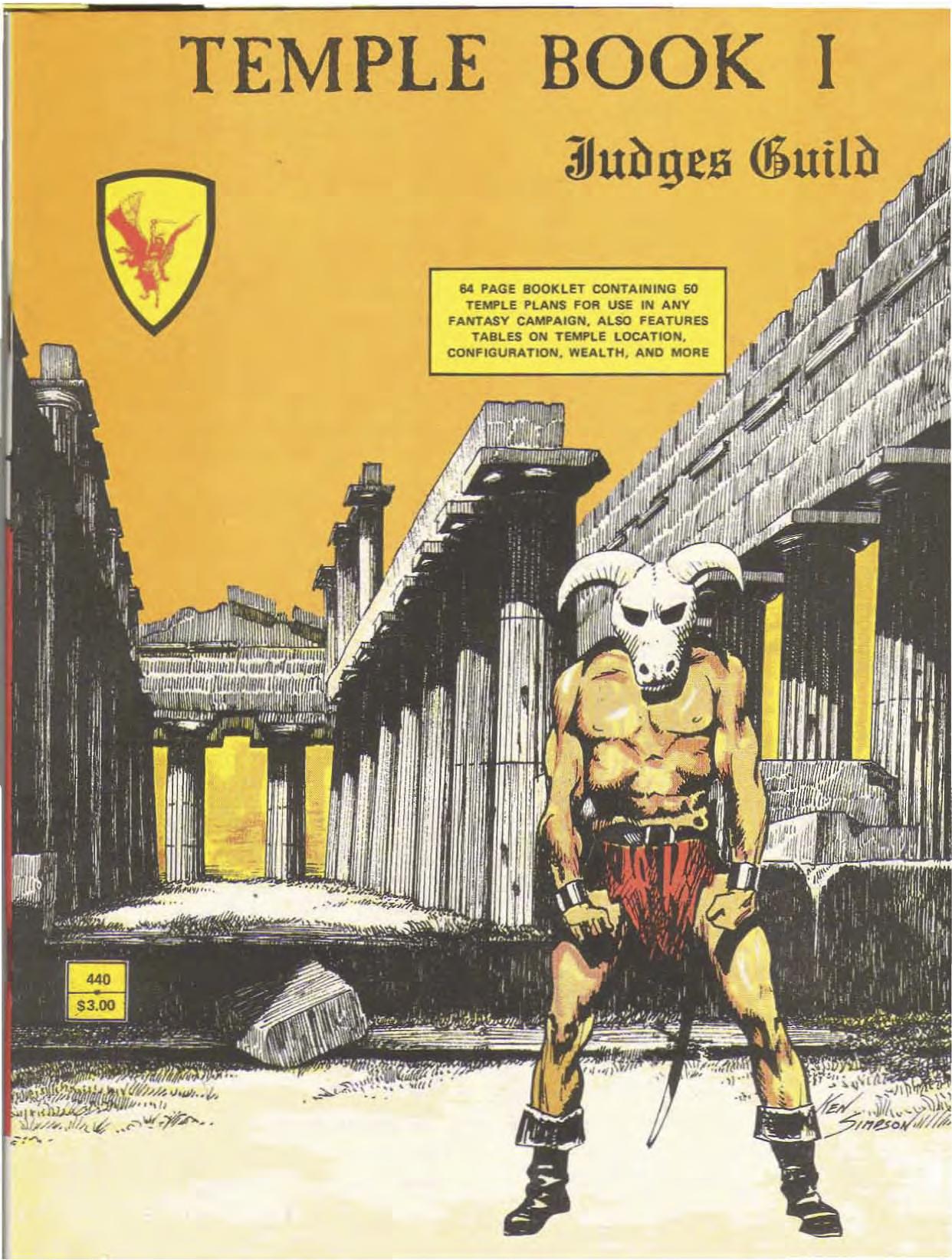
Color on the cover is not a good sign. There’s a useful selection of tables in this book. Which ceremony is it, which holy day is it on their calendar ? Nowadays you’d never introduce a temple to the game without coming up with some backstory for it, but back in the day a lot games were run with the PCs exploring the map. If only the maps weren’t worthless this would be auseful supplement. Let’s look at some of the good in the supplement.
First, from the tables, you wouldn’t want the GM to roll on this one:
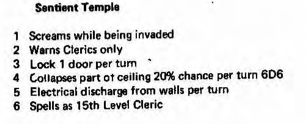
The Ceremonial Offerings table is disturbingly detailed...
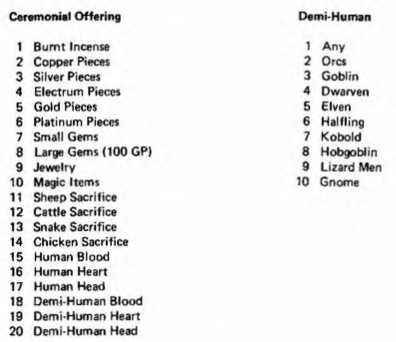
You can’t go wrong with a Curse Table. The artwork in the corner is smaller than average... And of average quality.
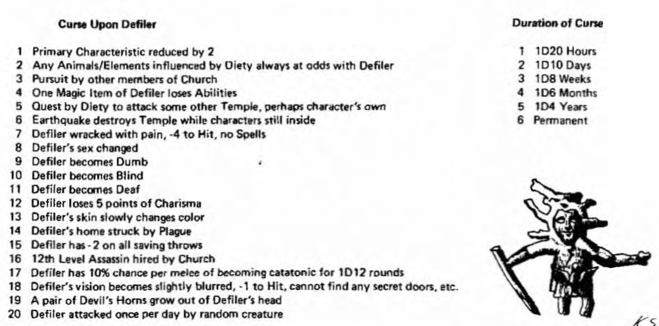
At least it’s better than the maps...
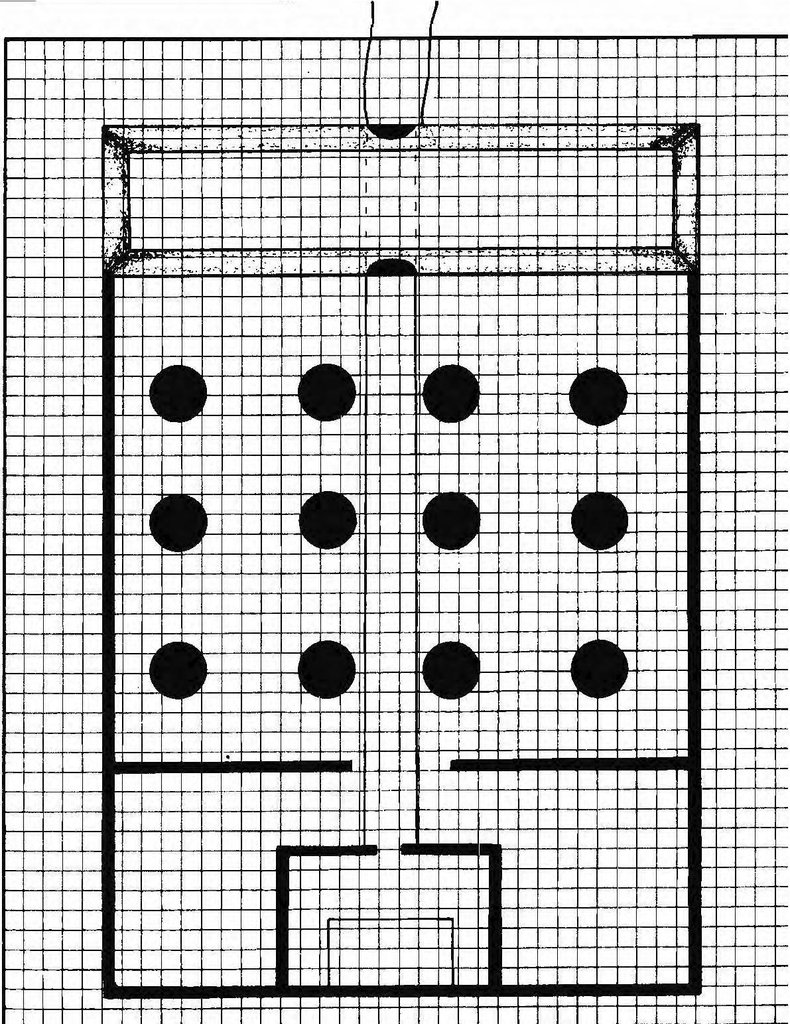
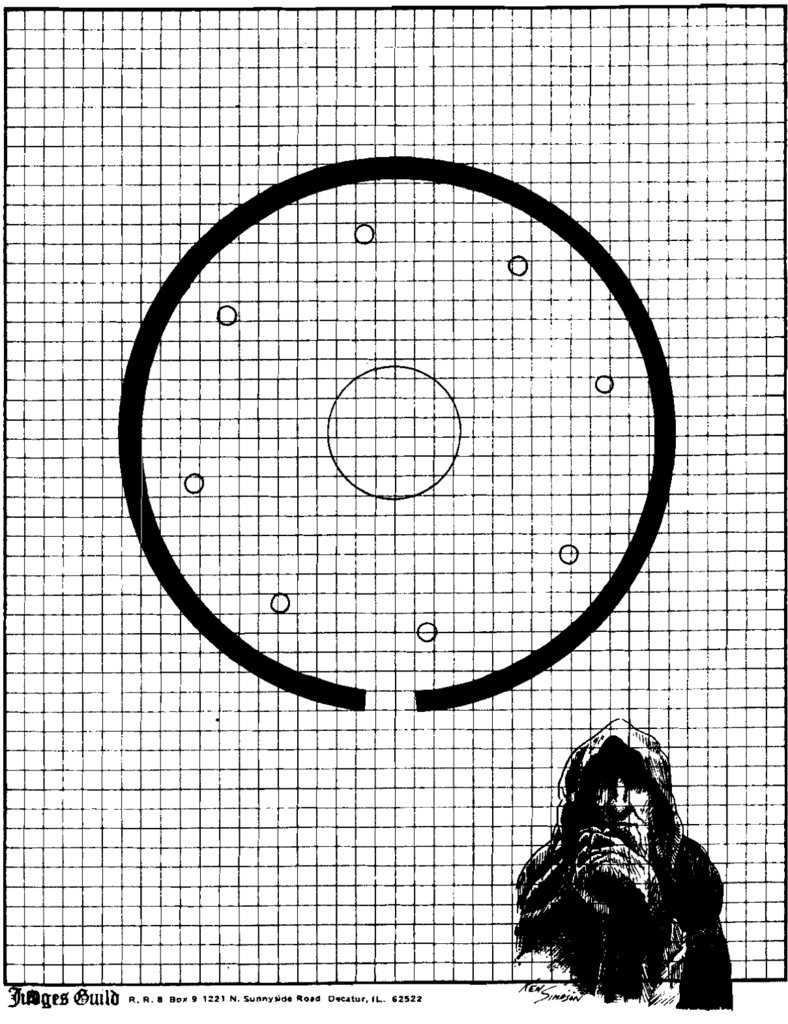
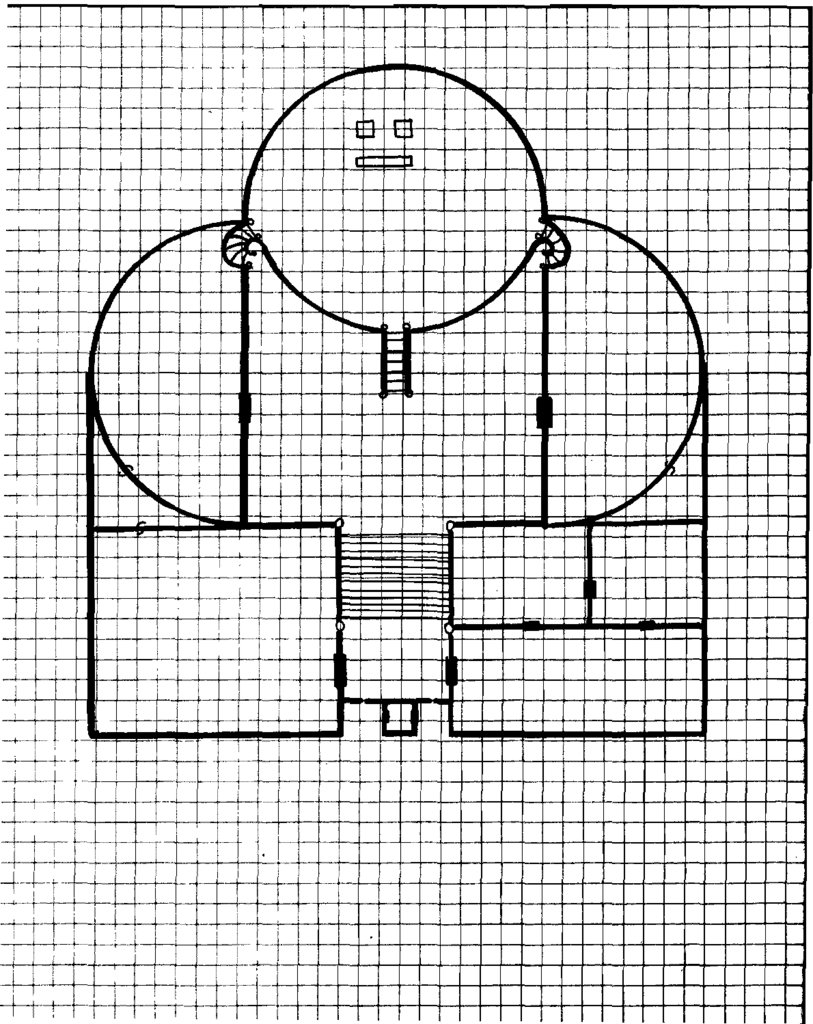
I wonder if that last one is supposed to look like anyone the author knew.
Two obscure supplements is enough for one post. Next up, Islands Book 1, we’ve rolled characters in this thread, let’s roll up a geographical feature for some variety. After that we’ll delve into the selection of tables in Ready Ref Sheets, vol 1. And by delve, I mean I’ll roll up a cave complex. Examining the rules for women will also be considered delving. I’ll just leave this here:
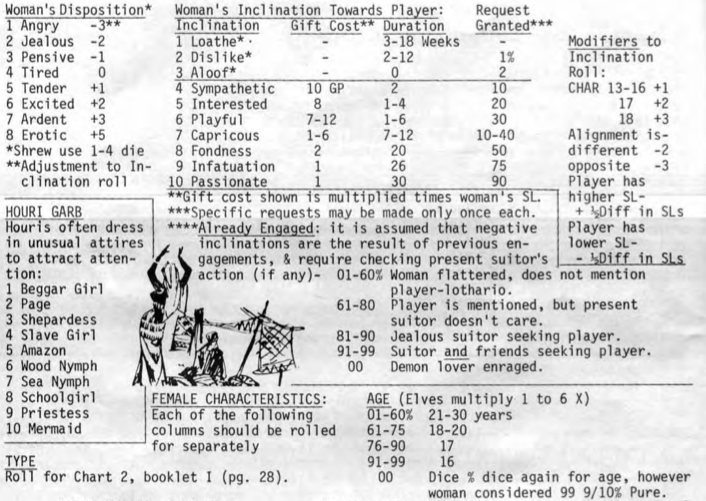
And yes, there are rules with (some of) these charts.
Ready Ref Sheets vol 2
Original SA post Judges Guild vol 2 The TablesReady Ref Sheets part 2
I teased about the stuff in Ready Ref Sheets but I can’t lay that out there and not follow up. Let’s get right into 50 pages of charts.The table of contents reminds me that this stuff came from the newsletter/magazine. I can’t imagine the stuff that didn’t make the cut.
In this book we have some actual rules, some weird stuff and some stuff that’s just wrong . I’ve already posted the worst example, let’s look at where they went right first.
I loved this page when I was a kid. We used it. Now that I’m an adult and have heard of the word “infographics” I love it in even more ways. This may be one of the least-organized pages in any RPG supplement not produced by Judges Guild. It’s also one of the coolest pages in any supplement published before 1980. Purestrain grog.
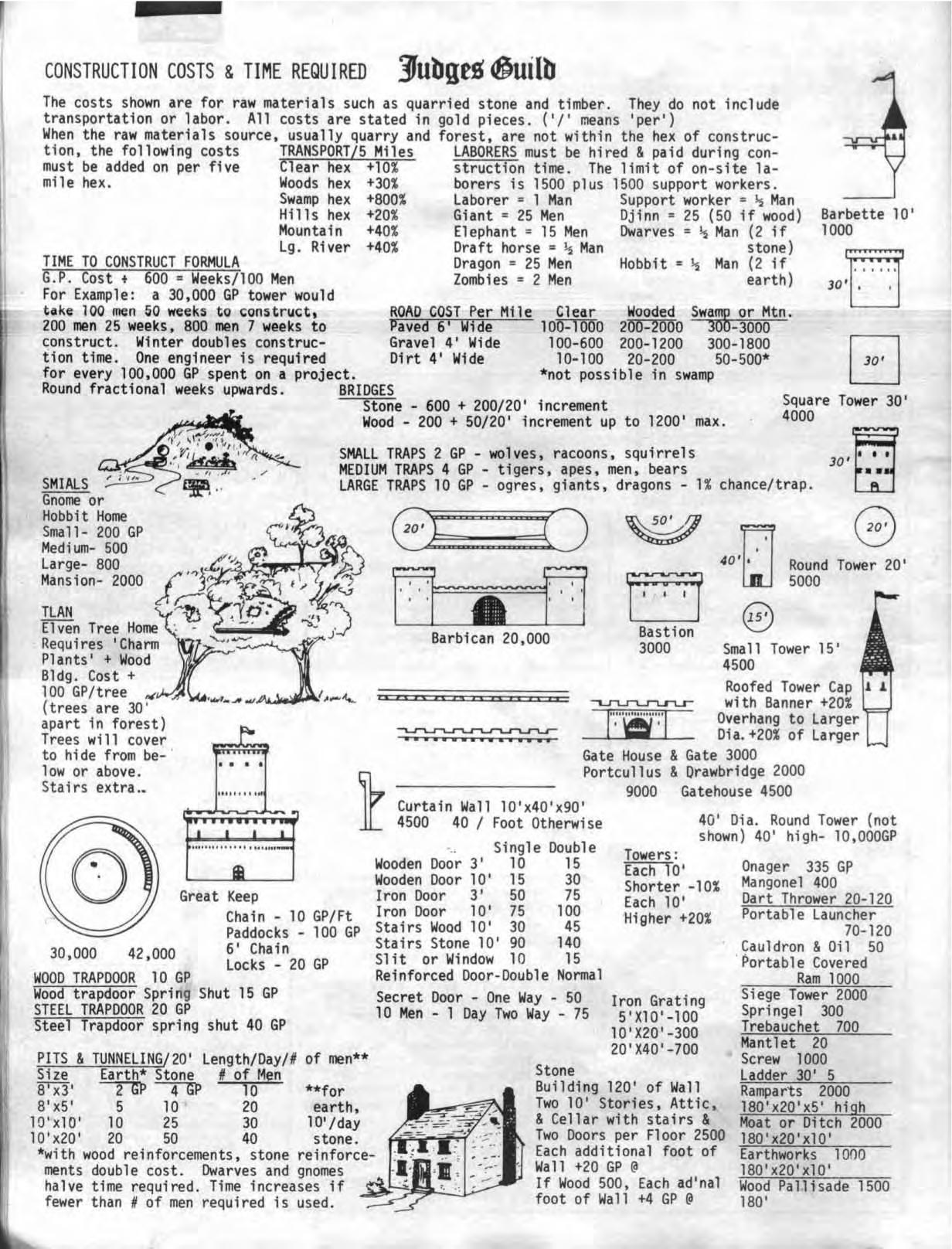
Other notably useful pages that aren’t worth actually linking are a guide to making magic items with costs and time, exchange rates, costs for making armor out different materials with AC adjustments and To Hit modifiers. It turns out gold weapons are surprisingly cheap and only a -1 to hit or AC ! An unusual gem table finishes off the page that started with the exchange rates ! They do squeeze a lot in. I’m not linking it, it’s useful not exceptionally interesting.
Lucky page thirteen has some pretty advanced houserules for the 70s, roll percentile against a stat. Some things you can try again and again, like research or bending the bars of your cell. Don’t roll doubles.
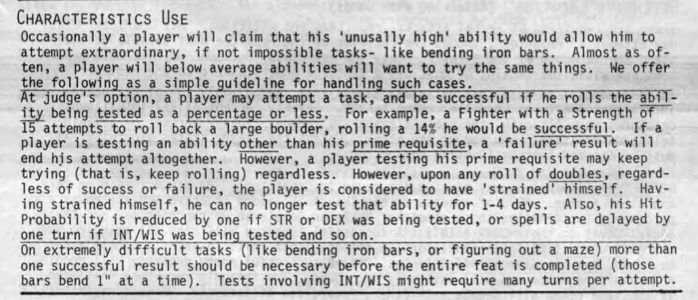
The Proclamation table (30% chance/wk) is worth a look. It’s one of the rare 2d6 charts, and I do believe that works out to about 2.5% chance per week of a royal prince being born. The king does get around...

Let’s have some rules. Since the average D&D party would have half the FBI after them full-time, D&D obviously needs rules for the characters being arrested and tried. Never having read Tomb of Horrors I can safely say this is one of the deadliest things I’ve ever seen in a module or supplement. Whoever wrote this up also indulges in the time honored vice of making up words. I ask you, who types “interpleader and then leaves it ?”. Someone trying to produce camera-ready copy on a typewriter, that’s who.I stand by mocking the guy for the word choice, but this is a pretty complicated layout for a typewriter. I’ve done this, it’s fucking difficult. But there are rules here. They reference the Social Level rules I haven’t mentioned yet, the difference in SL is a modifier. So is the crime charged, circumstances (Illegal Magic -2, Fair Fight +2, Victim in possession of Skittles -2), quality of your “litigation trickster”, the magistrate’s disposition, the weather. Yes, the weather has a modifier to your sentence, a rainy day is as bad as the modifier for rape, arson, manslaughter or desertion. At least it isn’t as bad as climbing the city wall. Unless the weather is “stinking” as well as raining, in which case it’s almost as bad. Stinking isn’t defined of course, they’d have had to write it in (and I’m sure they were tempting to put some notes in the margins). Here’s the whole page.
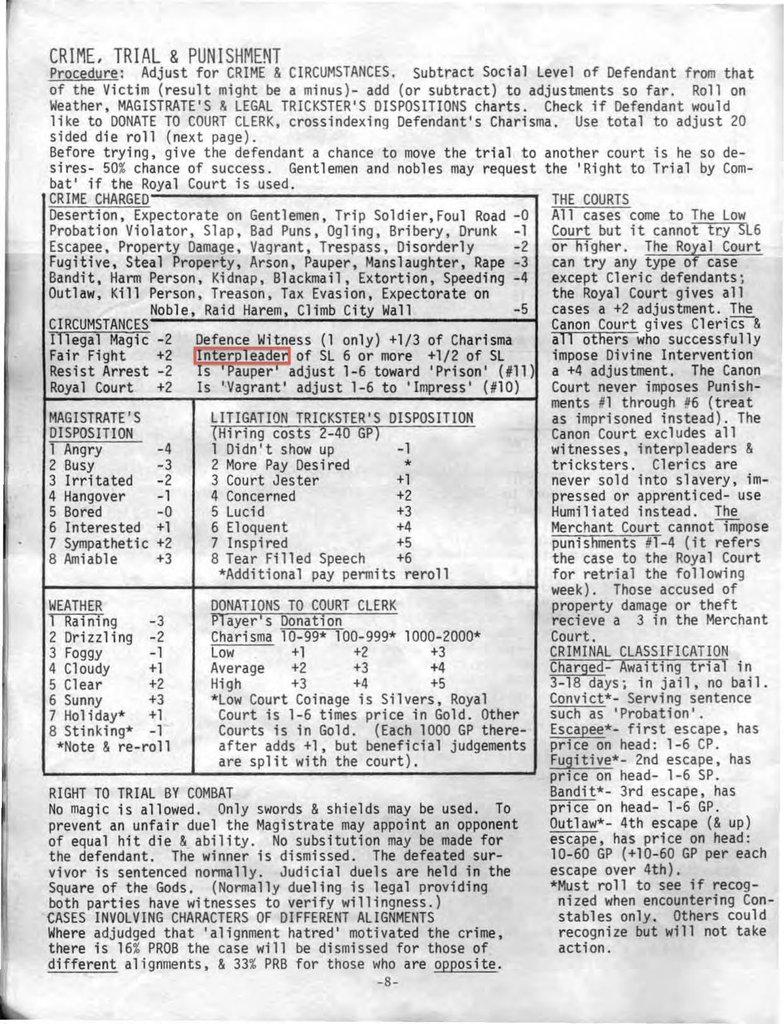
So you climb the city wall (-5), don’t resist arrest, it’s a clear day (+2), you have a defense witness of CHA 14 (+4) and an SL 6 interpleader (+3) who gives an eloquent speech (+4) before an irritated magistrate (-2) and only a token bribe (+2). That gives us a +9 on this table,
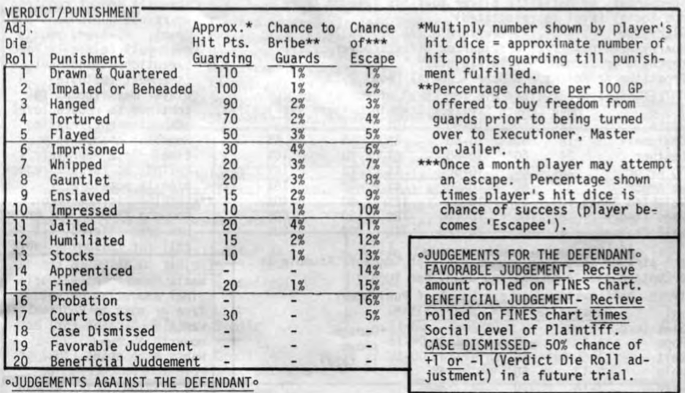
A roll of 11 +9 gives us a... beneficial judgement. Roll on the fine table and multiply by SL (call it a 4) ... 2000 GP. For climbing the wall. From an irritated magistrate. That must have been some speech. Ok,it’s more capricious than dangerous, but we had a 30% chance of at least a fine and could have been impressed, apprenticed or imprisoned for up to 4 years. The humiliation table is a hoot, most of these things would be a blast to see someone roleplay.
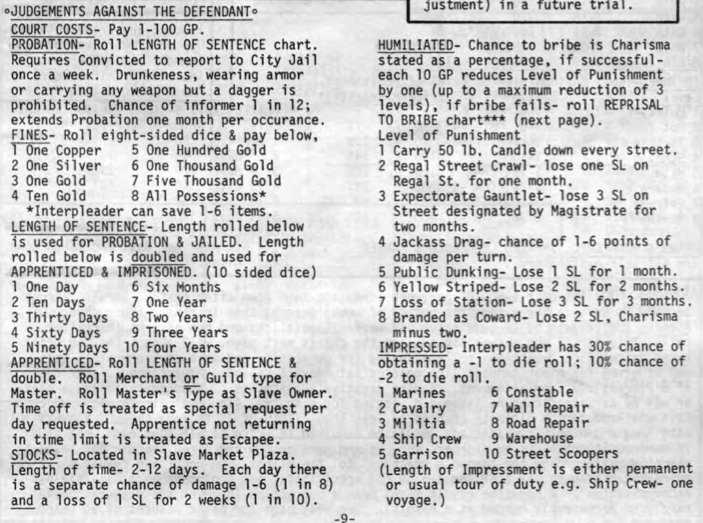
Let’s see the rest of the page, the Humiliated table is worth checking out. Note on the Fines table that it runs from 1 copper to 5000 GP or all your possessions. Imagine the look on a player’s face when he gets a beneficial judgement and his net worth suddenly multiplies.
There’s another 2/3 of a page for anyone who just HAS to know how badly you get whipped, how many HD are on your gauntlet or what can go wrong with a bribe.
I mentioned the Social Level rules. There’s no point to doing them as a prerequisite to the crime and punishment stuff, these rules are kinda thin. Aside from suggesting rolling 1d4+1 for a PC’s SL, there’s nothing on how players fit in to this system. Then again, players generally consider social structures as either suggestions or opportunities, so they really didn’t leave out much.
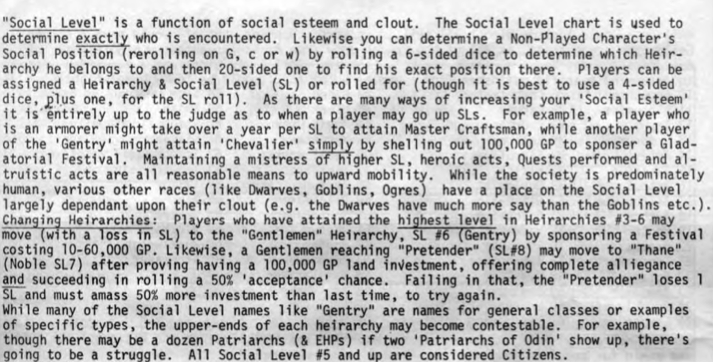
And for some godsforsaken reason, the SL table doubles as an encounter table. This system gives a remarkably high (i.e. any) chance of running into a wraith, golden dragon, zombies or skeletons just walking down the street. Also, if you run into a god you’ll know how much gold it’s carrying.
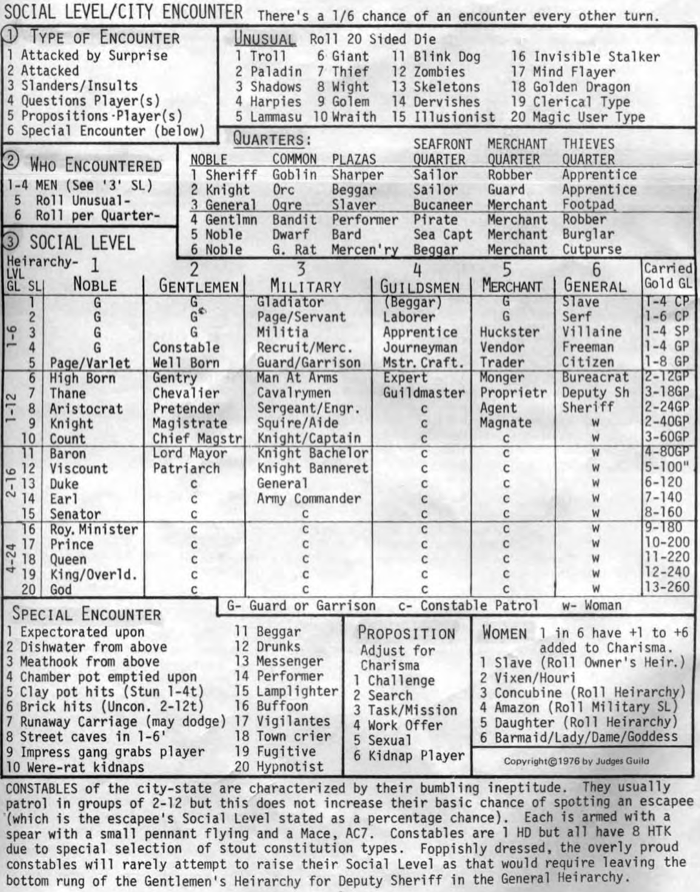
This update is getting long, so here’s the Unusual encounter table and some ancillaries. Next time, we’ll break this thing. More than it already is.
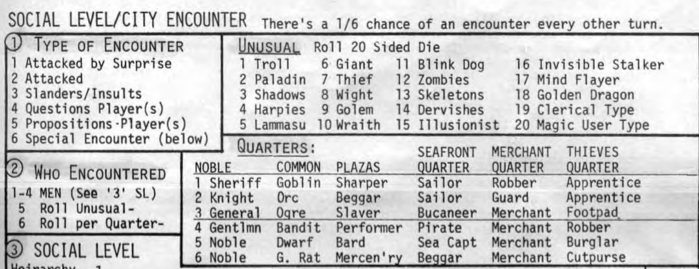
Ready Ref Sheets vol 3
Original SA postDr. Demon posted:
You have to admit that "litigation trickster" is a much better term than "lawyer". They should have made that a character class.
It's true, that's a good phrase.
Ready Ref Sheets part 3
When we last left our intrepid game designers, some poor bastard was laying out fifty or sixty pages of tables on a typewriter. Even when he got to do a page of mostly text, the copyediting for length must have been brutal.
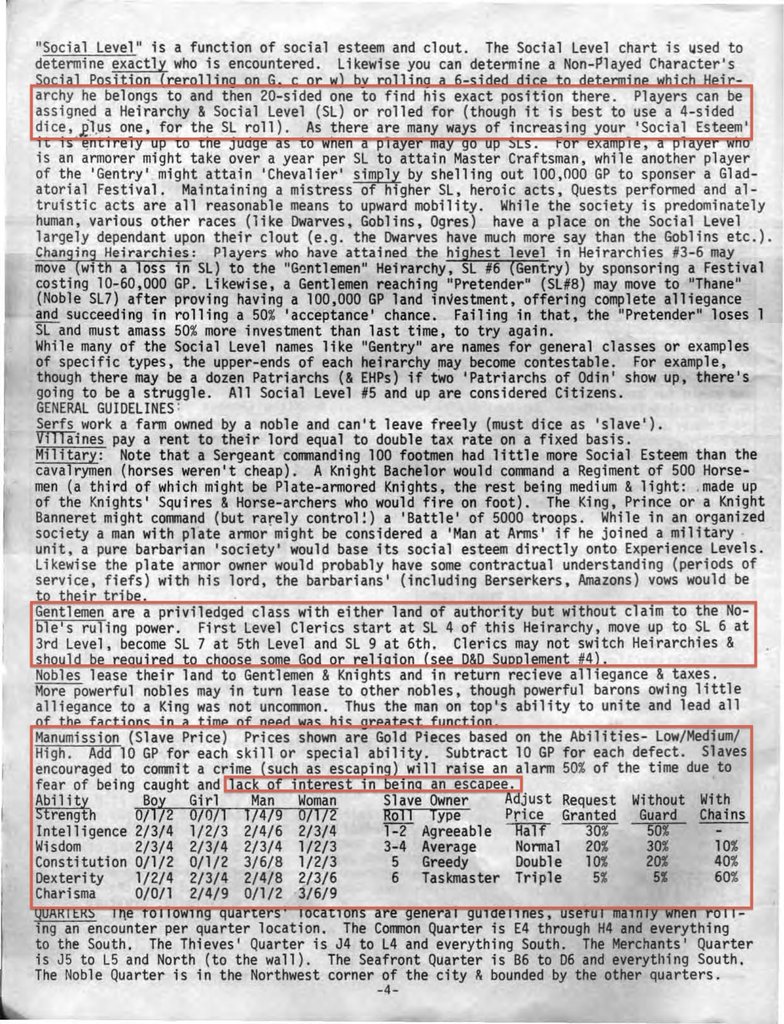
I mean honestly, who does that if they don’t have to ? Personally, I’m losing my taste for fixed-width fonts after staring at this book for so long (and not for the first time). But my taste for obscure rules and charts is only whetted, so let’s look at the highlighted portions.
First up are those “rules” for PC Social Level. Even a book of tables has to leave some things tot he GM’s imagination ! Skipping past the social mobility stuff (moving up is expensive, and rightly so) we get to the section under Gentlemen where apparently some PCs do have rules, Clerics start at Gentleman 4 and move up as they level. I’d impose the same costs as on a noble, for verisimilitude of course. Then there’s the double entry, mixed in with Social Levels are rules (and costs) for freeing a slave complete with a table for the disposition of the slave owner. Let’s zoom in on that...
“...lack of interest in being an escapee.” Yeah. So often when we look closely at the object of our nostalgia we find a pit of snakes. Hiss. Slaves will raise an alarm half the time if you offer to help them escape. I can’t see why, being charged as an Escapee is only a -2 for the crime, with a witness of average charisma you come up with with a +1 on the verdict table (ignoring weather and the magistrate, which can swing it up to another +7), enslaved is only at a natural 9 so anything above that is an improvement. Being a pauper moves you 1-6 towards jailed (at 11), but a 19 or a 20 sees you walk. Remember the beneficial judgement we rolled last time ? On a 20 (and a 1 on the pauper roll) the now free slave receives anywhere from 1 coper to 5000 gold, with a 50% chance of getting enough to outright buy his freedom. The magistrates obviously value moxie and chutzpah, they’re built into the system ! So are some very strong assumptions about the nature of slavery in their setting.
Naturally that brings up the two pages of rules and tables on women. I’m still teasing you with that, because the Social level/City Encounter table is next !

A nearly full-page chart with one sentence of rules is a step up for this book. Three of the tables have circled numbers on them, obviously you roll in that order. Grabbing some dice, the party is... Propositioned with a work offer from... A constable patrol. Not the guards, the comically inept, effete constables (rules and fluff at the bottom of the page). Ok, if you’re bored enough and the campaign is in enough of a rut that you’re rolling random encounters, a mix of comic relief and something for the PCs to do would be a godsend. I didn’t adjust the roll for the type of proposition because... it’s a flat d6 roll and that would be silly. Looking at the special encounter table I hope volume 2 has rules for finding a laundress.
Looking at the chart as a whole I have to say that when crunched for both space and layout time, listing out six hierarchies, populating them, and then fitting some generic encounters in to pad each column out to 20 is pretty clever. The down side is, you’re exactly as likely to run in the guildmaster as you are an apprentice. For the kind of games these guys seem to run, that’s probably a feature. Worse, someone might take the setting seriously and try and use the titles for the Merchant SLs in roleplay. Someone else will take advantage of the fact that everyone listed is carrying cash. That person will also insist that the inept constables I rolled earlier are carrying the 7d20 GP that the 14 entry under Guildsmen gets. At lower levels playing Grand Theft City State for some easy cash is a productive activity, with due regard paid to the crime and punishment tables of course.
The crazy train promptly runs of the tracks. Zooming in...
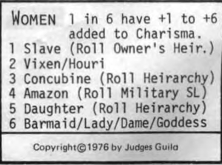
I included the copyright date because I think it explains a lot. I was in second grade when this thing came out, and I’m really glad I didn’t run into it until fifth or sixth. So here we have it, on the one in six chance there’s a w on the column you’re rolling on you run into one of these women. Don’t forget to test for the charisma bonus ! Sadly, at least one of your players will be asking “is she hot ?” in all seriousness. Let’s call that guy Dave because I had to call my ISP today and some guy named Dave told me to buy a new modem because a line was down. Dave is probably also the guy planning to get rich quick by farming constables. He’ll certainly be insisting that the d20 roll for SL also determines the amount of money the woman unfortunate enough to run into Our Heroes on the street will be carrying. Unless the player’s baser instincts have been held firmly in check, this will be regarded as an Opportunity. I’m going to take this opportunity to skip over the next page. Nobody reading this needs to roll a d8 to determine what kind of performers you encounter (and they left mimes off anyway).
And here we go, the last stop in Crazytown.
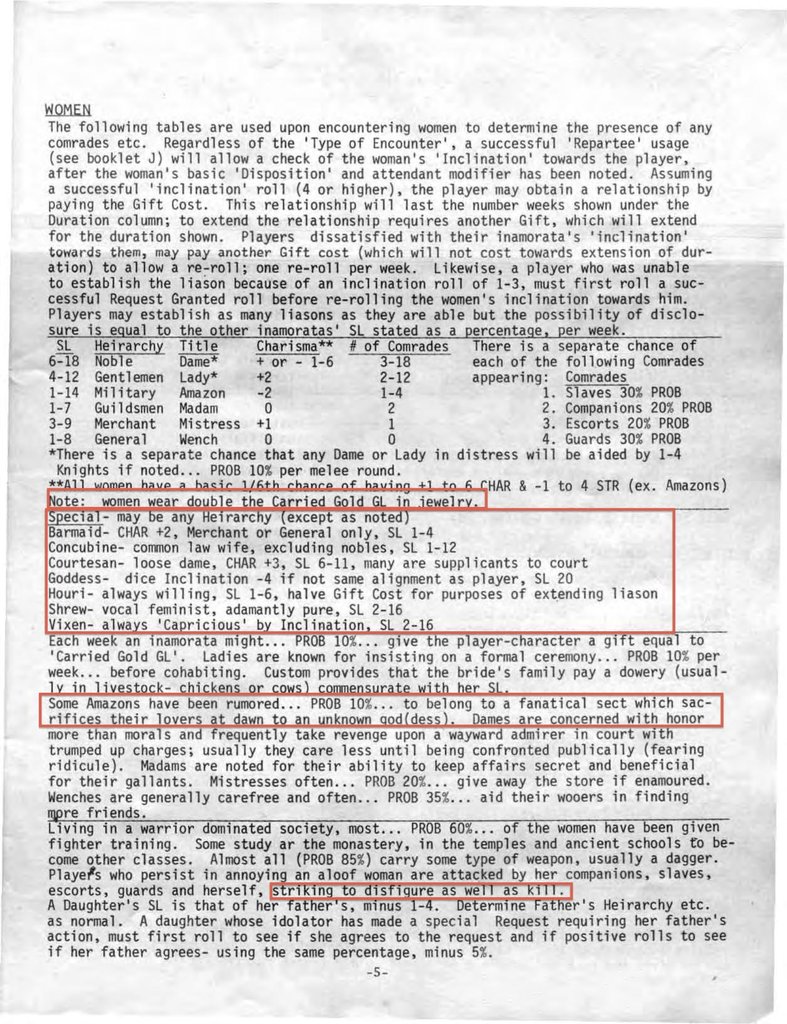
If this page had a URL on it, it would link to a Forever Alone subreddit. One sentence introduces the table and then we’re making a repartee roll to test her ‘inclination’ towards us. Here’s that table again.

The rules have some interesting tidbits in them. Using them should keep those baser impulses in down check needing to sprinkle saltpeter on the pizza. First off, women carry double the Carried Gold in jewelry (no mention if they carry any cash). This supports the notion that the d20 roll on the Hierarchy/Social level encounter table matters for carried gold in the case of guardsmen and constables as well as women. That’s bad. A woman’s Comrades will intervene if she is annoyed, “striking to disfigure as well as kill.” Ok that’s good. On top of that, a Dame or lady will have knights come out of nowhere to assist her; 1d4 knights, 10% chance per round. No GM worth his dice would stop rolling after the first group shows up. There’s a powerful saltpeter substitute if I ever saw one. To top it off (actually at the bottom of the page), 60% of women have been given fighter training, 85% carry a weapon and you might run into one with monk or spellcaster training. “Is she hot ? I try and grab her !” could be followed by that dread phrase, “roll for initiative.”
The “Special” table is pretty special. All barmaids are CHA +2, which is the most shockingly unrealistic thing in the book. The fact that it’s there for verisimilitude should tell you a lot. Oh I’m sorry, immediately following that is the part where the PC’s inamorata will give HIM gifts. I’m gonna call that a tie.
Ah, the ‘inamorata”. The famous Inclination table (I have a terrible feeling there’s an intentional pun here). There’s also the assumption that the woman in question already has a boyfriend if she doesn’t respond favorably to the PC’s advances. Because the only reason any woman would turn down a dashing hero is if she already has a boyfriend. The fact that the roll is modified by (presumably the PC’s) Charisma and the difference in SL has nothing to do with it. Just ask anyone in /r/foreveralone.
Stay classy RPGers, because here comes the Female Characteristics tables !
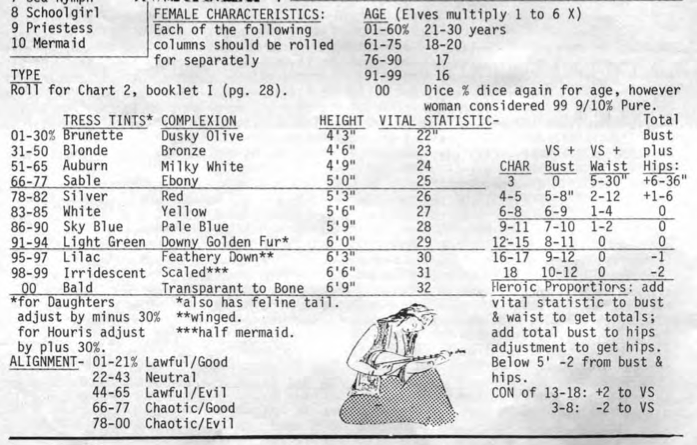
This is truly impressive. It’s 1976 and we have women with blue and green hair, blue women, and catgirls. Half-mermaid can only be there for bad jokes.The presence of a table for “vital statistics” should come as a surprise to no one. The CHA bonus is obvious, but they also put in a CON bonus. Childbearing hips or something, I’m not speculating.
Two final notes.
1. Amazons have a 10% chance of belonging to a cult that sacrifices their lovers at dawn.
2. I’m going to assume that it’s a Freudian slip when the rules for gift giving say “Players dissatisfied with their inamorata's 'inclination' towards them, may pay another Gift cost to allow a re-roll. I detect either a truly heroic alimony payment, PUA tendencies or both.
First up next time, Offensive Locution !
Sample Character
Original SA postmllaneza posted:
Ready Ref Sheets part 3




All these tables and you aren't going to roll a random woman? Then I guess it falls to me.
Alright, start off with (5) Daughter (I was hoping for Amazon but the dice never lie), with a Hierarchy roll of 18, that gets us Noble? 3-18 comrades, so 3d6 and get (3,5,6) so 14 people following around Random Q. Nobledaughter. Roll some percentile dice (77, 08, 58, 95), and the only other people that show up are Companions of some indeterminate number. Or possibly the 14 people are companions. 3d6 for CHA and get (4,5,4) for 13. Not sure how they expect you to get a +/- 1-6. Roll d6 and flip a coin, add the d6 if it's heads and subtract if it's tails? Well, we're enlightened people with no use for gender based ability modifiers anyways.
She carries (11d20) 125 GP, or apparently wears 250 GP worth of jewelry. Her disposition is (3) Pensive (-1). Yay for that, this would be creepy if I rolled Erotic (+5). Why is that the most favorable disposition instead of, say, "trusting" or "loyal"?
Getting more use out of my percentile dice here than I have in years. (84) for Age gets us 17, hair color of (79-30) Blonde (Daughters get a -30 to their hair color roll and thus get stuck in the boring region of the chart. I guess you have to become an Amazon or something if you want to be an anime or front Skunk Anansie.), with (10) getting us Dusky Olive complexion. (87) gets us 5'9", pretty damn tall, and (22) gets us a 22" "vital statistic" so I guess she is built like a rail. I'll pass on figuring out the 17 year old's measurements. Finally, (85) gets us... Chaotic Evil. Huh. Well, the chart said it, so it must be true.
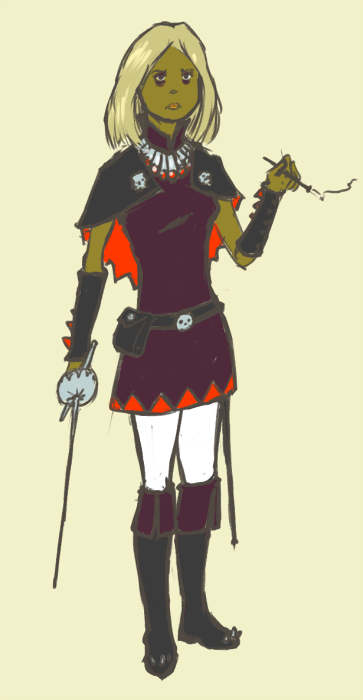
I guess that outfit might be more Lawful Evil. What I should've done is gone back the the Maid RPG writeup and gotten some truly random clothes, but too late now.